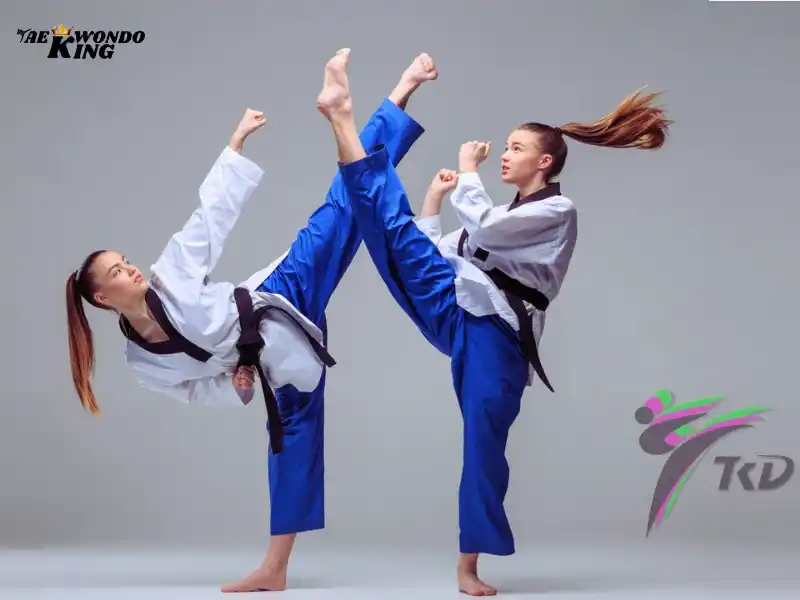
Taekwondo, a traditional Korean martial art, is renowned for its dynamic kicks, powerful strikes, and disciplined training methods. As a beginner stepping onto the path of Taekwondo, you’re embarking on a journey that encompasses physical fitness, mental clarity, and personal growth. This comprehensive guide will walk you through the essence of Taekwondo, its history, fundamental techniques, training principles, and how to get started on your own Taekwondo journey. Learn A Beginner’s Guide to Taekwondo.
Today, Taekwondo is practiced by millions of individuals around the world, spanning various age groups and skill levels. It embodies not only physical techniques but also a philosophy of discipline, respect, and personal growth. Taekwondo gi, taekwondo uniform, taekwondo belts, and taekwondo ranks are essential in taekwondo classes in a taekwondo academy. As practitioners engage in rigorous training and hone their techniques, they become part of a legacy that blends tradition and modernity, bridging the past and the future of this captivating martial art.
Taekwondo, a captivating martial art celebrated for its high-flying kicks and powerful techniques, has a rich and fascinating history that spans centuries. Originating in Korea, the roots of Taekwondo can be traced back to ancient times, when various forms of martial arts were practiced for self-defense and combat training.

Beginner’s Guide to Taekwondo: Understanding A Brief History
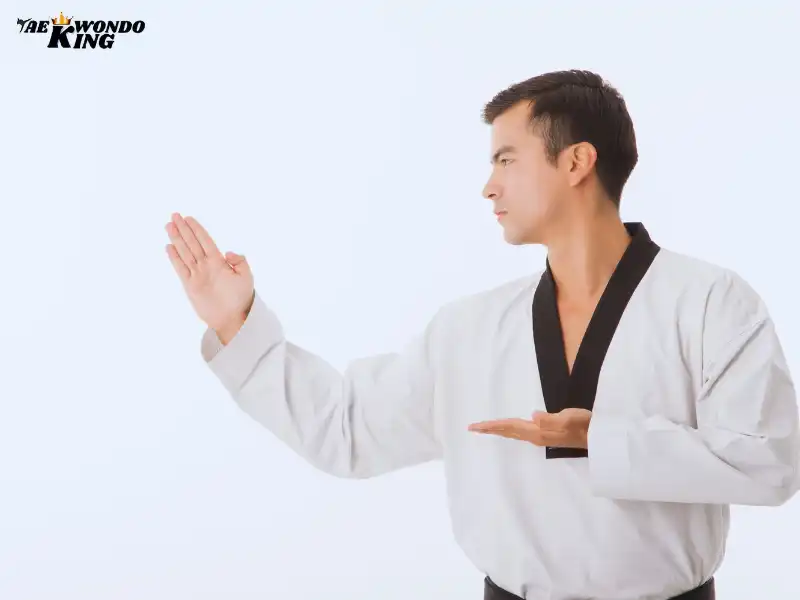
Taekwondo, a vibrant Korean martial art, carries a rich history dating back over two millennia. Rooted in the ancient Korean fighting styles, it gained formal recognition in the mid-20th century. Developed as a means of self-defense and strengthening national identity, Taekwondo’s evolution led to its global prominence. In 1988, it became an Olympic sport, propelling it onto the international stage. This fusion of tradition and modernity embodies the spirit of Taekwondo. From its humble beginnings to its current global stature, Taekwondo’s journey is a testament to the enduring power of martial arts.
The global recognition of Taekwondo surged as it spread beyond Korean borders. In 1988, Taekwondo achieved a significant milestone when it was included as an official Olympic sport in the Seoul Summer Olympics. This momentous event marked Taekwondo’s transition from a regional martial art to an internationally recognized sport and martial discipline.
Kukkiwon (widely known as the World Taekwondo Headquarters), International Taekwon-Do Federation (ITF), and other systems (which include some persons receiving ranks from taekwondo organizations that predate the other two systems, e.g. the original Korean Taekwondo Association (KTA) and United Taekwondo Association (UWTA). The World Taekwondo (WT) published a Best Taekwondo Players Ranking Every month.
Name of Taekwondo Poomsae
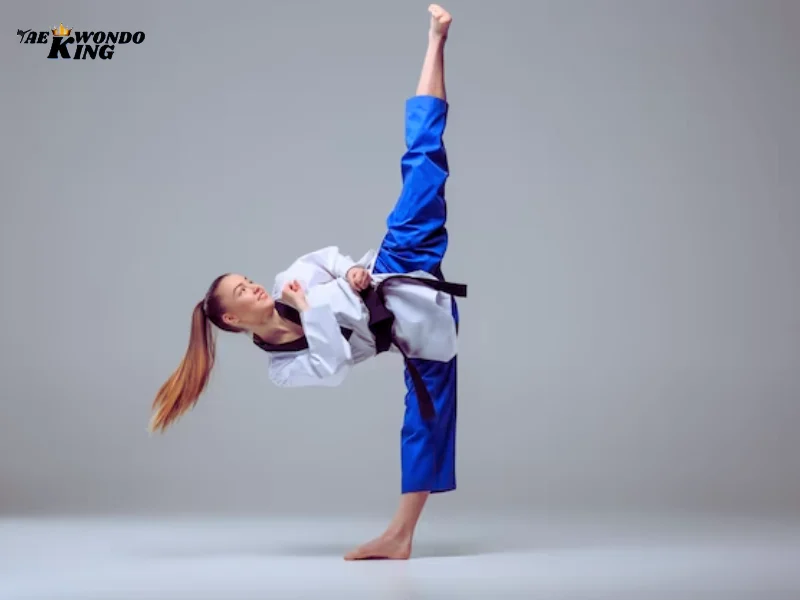
Poomsae 1: Taegeuk Il Jang (White Belt), Poomsae 2: Taegeuk Yie Jang (Yellow Belt), Poomsae 3: Taegeuk Sam Jang (Green Belt), Poomsae 4: Taegeuk Sah Jang (Green Blue Belt), Poomsae 5: Taegeuk Oh Jang (Blue Belt), Poomsae 6: Taegeuk Yuk Jang (Blue Red Belt), Poomsae 7: Taegeuk Chil Jang (Red Belt), Poomsae 8: Taegeuk Pal Jang (Sinio Red Belt), Poomsae 09: Koriyo (1st Dan/Poom Black Belt), Poomsae 10: Keumgang (2nd Dan Black Belt), Poomsae 11: Taebak (3rd Dan Black Belt), Poomsae 12: Pyongwon (4th Dan Black Belt), Poomsae 13: Sipjin (5th Dan Black Belt), Poomsae 14: Jitae (6th Dan Black Belt), Poomsae 15: Chonkwon (7th Dan Black Belt), Poomsae 16: Hansu (8th Dan Black Belt), Poomsae 17: Ilyo (9th Dan Black Belt)
Philosophy and Values of the Beginner’s Guide to Taekwondo
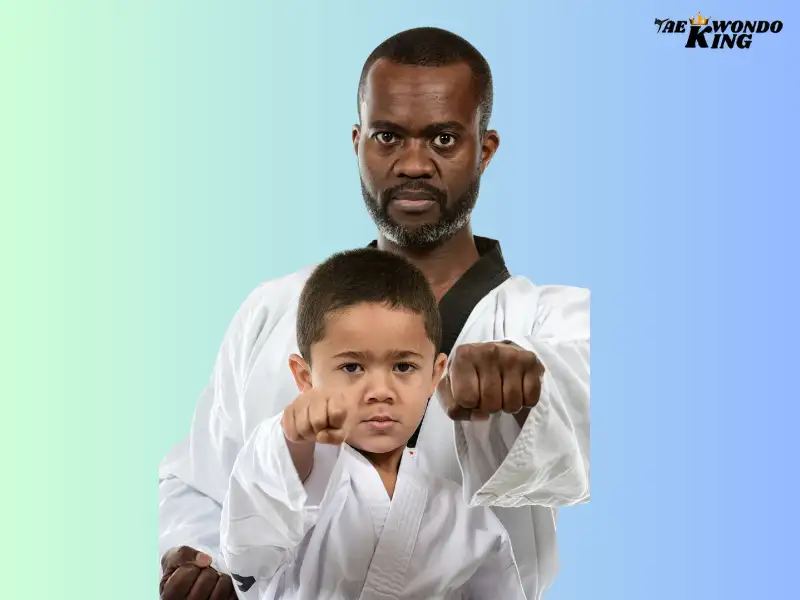
Taekwondo requires the practitioner to exercise patience and discipline. Self-discipline is important in maintaining concentration throughout the session. Respect for others is also very important because you will be competing with other taekwondo practitioners. You must always be honest and fair to all opponents. It is not a wise idea to cheat during a taekwondo match. The opponent may be injured because of this.
Taekwondo is a sport that requires the practitioner to think about all the principles and values that are mentioned above. These principles are important if you want to become the best Taekwondo practitioner in the world. At the core of Taekwondo lies a set of values that guide practitioners both inside and outside the training hall.

These Taekwondo values include:
- Courtesy (Ye Ui): Respect for oneself and others.
- Integrity (Yom Chi): Honesty and moral principles.
- Perseverance (In Nae): The ability to withstand challenges and difficulties.
- Self-Control (Guk Gi): Maintaining control over one’s actions and emotions.
- Indomitable Spirit (Baekjul Boolgool): Unyielding determination and courage in the face of adversity.
Basic Techniques and Stances of the Beginner’s Guide to Taekwondo
Taekwondo is one of the most popular traditional Korean martial arts. It is an effective way to stay fit and healthy. It is a self-defense system that combines physical fitness with the ability to control your emotions. Taekwondo is also known as Taekkyeon. It is a Korean martial art that uses the concepts of taekwondo poomsae, forms, sparring, kicks, and blocks.
The main purpose of taekwondo is to improve the health, fitness, and skill of the practitioner. A taekwondo match is the first step towards achieving the highest rank in this sport. Every student must train at least four times a week. The training sessions must last one hour. They can be performed in a gym or outdoors. The sessions should be conducted with a partner so that they can practice their kicks and blocks.
Beginner’s Guide to Taekwondo is characterized by its explosive and high-flying kicks, complemented by strong hand techniques. Some fundamental techniques and stances include:
- Front Kick (Ap Chagi): A straightforward kick targeting an opponent’s midsection.
- Roundhouse Kick (Dollyo Chagi): A circular kick aimed at the body’s side or head.
- Side Kick (Yop Chagi): A lateral kick with the foot’s edge targeting the opponent’s ribs or head.
- Knife-Hand Strike (Sonkal large): A hand technique using the knife edge of the hand.
- Walking Stance (Gunun Seogi): A basic stance with one foot in front and the other behind, promoting balance and mobility.
Korean Names for Various Taekwondo Kicks Axe Kick – Naeryeo Chagi Back Kick – Dwi Chagi (“D-we Cha-gee”) Crescent Kick–Bandal Chagi Flying Back Kick – Twi-myo Dwi Chagi Flying side kick – Twi-myo Yeop Chagi Front Kick, Hook Kick – Huryeo Chagi Jumping Front Kick – Eedan Ap Chagi Kick–Chagi (“Cha-gee”) – Generic term for kick Knee Strike – Moreup Chagi.
Training Principles and Methods of the Beginner’s Guide to Taekwondo
Mastering martial arts requires more than just physical strength; it demands a structured approach that combines discipline, technique, and continuous improvement. Whether you’re a beginner or a seasoned practitioner, understanding the fundamental training principles and methods can significantly enhance your journey.
- Progressive Overload: Gradually increase the intensity of your training to challenge your body and encourage growth. This principle applies to strength training, conditioning, and skill development.
- Consistency: Regular training is essential for skill retention and improvement. Consistency helps build muscle memory and reinforces techniques.
- Specificity: Tailor your training to match the demands of your chosen martial art. Focus on techniques, drills, and exercises that directly relate to your goals.
- Variation: Introduce variety in your training routine to prevent plateaus and keep things engaging. Mix up techniques, drills, and workout formats.
- Rest and Recovery: Adequate rest allows your body to repair and grow stronger. Overworking can lead to burnout and injuries.
- Mindful Practice: Pay attention to detail and execute techniques with precision. Mindful practice enhances muscle memory and refines your skills.

Taekwondo Belt System and Progression
One of the things that keeps me motivated in taekwondo is the belt progression system. You start as a white belt and, with time and dedication, work your way through various colored belts, earning each one through tests. It’s a satisfying feeling when you pass a test and move to the next level. Plus, each belt level teaches you more advanced techniques!
Beginner’s Guide to Taekwondo Training Methods:
- Sparring: Controlled live practice where you apply techniques in simulated combat scenarios.
- Forms or Poomsae: Choreographed sequences of movements that enhance technique, balance, and fluidity.
- Pad Work: Striking pads held by partners to improve accuracy, power, and timing.
- Bag Work: Training with heavy bags to develop striking power, endurance, and technique.
- Strength and Conditioning: Incorporate functional exercises to enhance overall fitness and prevent injuries.
- Partner Drills: Cooperative exercises with partners to work on specific techniques, counters, and reactions.
Effective training principles and methods not only lead to technical proficiency but also foster mental resilience and personal growth. Customize your approach to align with your goals and level, and remember that the journey of martial arts is as much about the process as it is about the destination.
Taekwondo Training for Beginners
Your training sessions will consist of several key elements: warm-ups, practice drills, learning forms (known as “poomsae”), and sparring. While sparring might seem intimidating, it’s all about gradually building confidence. I started with light sparring and now enjoy the adrenaline rush that comes with it. Take it slow, and don’t feel pressured to rush into sparring until you’re ready.
Taekwondo Forms (Poomsae)
Poomsae, or “forms,” are sequences of movements that help teach balance, precision, and control. Each form has a unique set of movements that correspond to different levels of proficiency. I remember the feeling of accomplishment when I first completed my first poomsae. They may seem complex at first, but the repetition will make them feel natural.
Benefits of Taekwondo
Beginner’s Guide to Taekwondo, a revered martial art originating from Korea, transcends physical combat to offer a myriad of holistic advantages. Embracing the art of Taekwondo goes beyond kicks and strikes, leading to profound physical, mental, and emotional transformations.
1. Physical Fitness: Taekwondo is a comprehensive workout that enhances cardiovascular health, muscular strength, flexibility, and coordination. The explosive kicks and swift movements engage various muscle groups, promoting overall fitness.
2. Self-Defense Proficiency: Learning Taekwondo equips practitioners with practical self-defense skills. The ability to protect oneself and others fosters confidence and a sense of security.
3. Discipline and Focus: Practice Taekwondo places a strong emphasis on discipline, self-control, and mental clarity. Practitioners learn to channel their focus and maintain composure under pressure.
4. Stress Relief: Engaging in martial arts releases endorphins, reducing stress and promoting a sense of well-being. The mental concentration required during training acts as mindfulness, relieving tension.
5. Improved Confidence: As skills develop, so does self-assurance. Overcoming challenges and mastering techniques cultivate a strong sense of accomplishment and self-belief.
6. Character Development: Taekwondo’s core values, such as respect, integrity, perseverance, and indomitable spirit, guide practitioners toward becoming better individuals in all aspects of life.
7. Flexibility and Balance: The varied movements in Taekwondo enhance flexibility and balance. These benefits not only improve performance but also reduce the risk of injuries.
Incorporating Taekwondo into your life opens the door to a holistic transformation. Beyond its physical prowess, Taekwondo enriches the mind and spirit, creating a well-rounded individual capable of facing life’s challenges with grace and strength.
While Taekwondo offers numerous benefits, it’s vital to acknowledge the potential risks. The art’s dynamic kicks and fast-paced movements can lead to injuries if proper precautions aren’t taken. Sprains, strains, and even fractures are possible, especially when techniques are improperly executed. Sparring carries the risk of bruises and impacts, necessitating protective gear.
Risks of Taekwondo

Head injuries are a concern despite headgear usage. Pushing too hard without adequate rest may result in overuse injuries. However, these risks can be minimized with proper training, supervision, and adherence to safety protocols. Taekwondo’s rewards are abundant, but awareness of its potential hazards is essential for a safe and fulfilling journey.
As you begin your journey in Taekwondo, remember that it’s more than just a martial art–it’s a lifestyle that encompasses physical fitness, mental clarity, and a strong sense of values. With dedication, perseverance, and the guidance of experienced instructors, you’ll not only master powerful techniques but also cultivate a disciplined mind and an indomitable spirit. Whether your goal is self-defense, physical fitness, or personal growth, Taekwondo has much to offer. So step onto the mat with an open heart and a focused mind, and let your journey in Taekwondo unfold, one kick at a time.
Why Taekwondo is Great for Beginners

When I first started taekwondo, I was worried I wouldn’t be able to keep up. But to my surprise, it’s incredibly beginner-friendly. Whether you’re looking to improve flexibility, strength, or just want a new challenge, taekwondo offers a balanced training routine that can accommodate beginners of all levels. You’ll learn basic techniques that gradually increase in complexity, so don’t stress about starting out.
What are the basic principles of Taekwondo?
The five basic principles of Taekwondo are courtesy, integrity, perseverance, self-control, and indomitable spirit. These principles guide practitioners to have respect for others, maintain honesty and moral values, keep pushing forward despite challenges, and have control over their actions and emotions.

Basic Skills in Taekwondo
As you begin your taekwondo journey, you’ll first focus on mastering fundamental techniques. These include basic punches, blocks, stances, and—most importantly—kicks! The first few months can feel overwhelming with all the terminology and movements, but trust me, with practice, these skills become second nature. When I first learned the roundhouse kick, I felt like I was part of an action movie!
Taekwondo Techniques for Beginners
When you step onto the mat, you’ll be introduced to simple techniques like the front kick, side kick, and backfist strike. These are key moves you’ll practice over and over, helping you build muscle memory. I remember spending hours perfecting my kicks, and while it was tough, it was also incredibly rewarding. Don’t rush—take your time with each technique, and enjoy the progress!
Can anyone learn Taekwondo, regardless of age or fitness level?
Yes, anyone can learn Taekwondo regardless of age or fitness level. Taekwondo classes are designed to accommodate individuals of all ages and fitness levels. Whether you are a child, teenager, adult, or even a senior, you can start learning Taekwondo and gradually improve your skills and fitness over time. It is never too late to start!
What are the physical benefits of practicing Taekwondo?
Practicing Taekwondo can improve your cardiovascular fitness, flexibility, strength, and coordination. It also helps to increase your stamina, balance, and agility.
How can Taekwondo improve mental discipline?
Taekwondo requires focus, concentration, and self-control. Through training and practice, practitioners learn to discipline their minds, develop patience, and enhance their ability to stay calm in challenging situations.

How to achieve flexibility in Taekwondo training?
To achieve flexibility in Taekwondo training, here are some tips:
1. Warm-up: Begin each training session with a warm-up that includes dynamic stretching exercises to prepare your muscles for increased flexibility.
2. Regular stretching: Make sure to incorporate regular stretching exercises into your training routine, focusing on all major muscle groups used in Taekwondo. Hold each stretch for at least 30 seconds, and take deep breaths to relax into the stretch.
3. Targeted stretching: Concentrate on specific stretches that target areas commonly used in Taekwondo, such as the legs, hips, and lower back. Some effective stretches include the butterfly stretch, seated forward bend, and standing quadriceps stretch.
4. Gradual progression: Gradually increase the intensity and duration of your stretching exercises over time. Challenge yourself to go a little further each time, but pay attention to your body and avoid overstretching or causing pain.
5. Consistency: Flexibility takes time and consistent effort. Aim to stretch at least 3-4 times a week, if not daily, to see improvements in your flexibility.
6. Cross-training: Engage in other activities that promote flexibility, such as yoga or Pilates, to complement your Taekwondo training and enhance overall flexibility.
Always remember to warm up before stretching and consult with a qualified instructor to ensure proper technique and prevent injuries.
How to achieve a black belt in Taekwondo?
To achieve a black belt in Taekwondo, you need to follow a structured training program and undergo a series of tests and evaluations. Here are some general steps you can take:
1. Find a reputable Taekwondo school or instructor who can guide you through the journey to a black belt.
2. Begin your training by learning the basic techniques, forms (poomsae), and sparring drills.
3. Practice regularly and consistently to improve your skills, strength, flexibility, and endurance.
4. Attend classes and follow the curriculum set by your instructor, which may include belt promotions and tests.
5. As you progress through the ranks, you will need to demonstrate mastery of various techniques, forms, and self-defense techniques.
6. Show discipline, respect, and good sportsmanship during your training and interactions with other students.
7. Prepare for and pass the black belt test, which may involve physical demonstrations, written exams, and board breaking.
8. After passing the test, you will be awarded the black belt and can continue to advance to higher dan ranks.
Remember, achieving a black belt is a long-term commitment that requires dedication, perseverance, and hard work. It is essential to train under qualified instructors and follow the principles of Taekwondo, including humility, self-control, and integrity.
How to Practice Taekwondo at Home
While you’ll definitely want to attend classes to get the proper guidance, there’s a lot you can do at home, too. Practicing basic kicks, stances, and shadow sparring are great ways to reinforce what you’ve learned. I’ve often practiced my forms in front of a mirror to check my posture and alignment. It’s all about consistency!
Is Taekwondo Good for Fitness?
Absolutely! Taekwondo isn’t just about martial arts; it’s a full-body workout that builds strength, endurance, flexibility, and coordination. I’ve noticed improvements in my overall fitness, especially in my core strength and cardiovascular health. Plus, it’s a fun way to stay in shape, and the sense of accomplishment after every class is motivating.

Choosing the Right Taekwondo School
Choosing the right school can make a big difference in your journey. Look for a place that offers beginner classes, has qualified instructors, and promotes a positive and supportive atmosphere. I remember how important it was to find a school where I felt comfortable asking questions and making mistakes. A welcoming environment is key to staying motivated.
In conclusion,
Taekwondo is a martial art that not only teaches self-defense skills but also promotes physical fitness, mental discipline, and personal growth. As a beginner, it is important to start with the basics and gradually progress through the different levels of training. With dedication and practice, you can become proficient in Taekwondo and experience the many benefits it offers, such as improved confidence, focus, and overall well-being. Whether you are a beginner or have some experience, practicing Taekwondo can be a rewarding journey toward personal development and overall fitness. So, put on your dobok and get ready to embark on this exciting martial arts adventure!
Starting taekwondo is an exciting and rewarding journey. With patience, practice, and the right mindset, you’ll quickly improve your skills and develop confidence. From one beginner to another, trust me when I say it’s worth it. The discipline, focus, and fitness benefits are just the beginning—you’ll grow in ways you never imagined.
FAQs:
How to learn Taekwondo for beginners?
Learning Taekwondo as a beginner can be an exciting and rewarding experience. The first step is to find a reputable Taekwondo school or instructor in your area. Once you have found a school, you can talk to the instructor about beginner classes and what to expect. It’s important to start with the basic techniques and forms, as well as learn about the philosophy and values of Taekwondo.
As a beginner, it’s also important to be patient and consistent with your practice, as progress in Taekwondo takes time and dedication. Additionally, practicing at home and staying physically fit can also help with your progress in learning Taekwondo. Remember to always listen to your instructor and ask questions when you need clarification. With dedication and hard work, you can learn and excel in Taekwondo as a beginner.
How do I start learning Taekwondo?
The first step to learning Taekwondo is to find a reputable and qualified instructor or martial arts school. Look for a school or instructor that is accredited by a recognized Taekwondo organization and has a good reputation. Once you’ve found the right instructor or school, you can start by learning the basic stances, strikes, and kicks of Taekwondo. It’s important to practice regularly and stay disciplined in your training to progress and improve in the martial art.
Can I teach myself Taekwondo?
Yes, it is possible to learn Taekwondo to a certain extent by utilizing online resources, instructional videos, and practicing at home. However, it’s important to keep in mind that Taekwondo is an intricate martial art that necessitates proper guidance and instruction from a qualified instructor to truly excel in the techniques and principles. Self-teaching can serve as a good introduction, but ultimately, seeking professional instruction is advised for proper skill development and to ensure safety.
Is it good to start Taekwondo at 14?
Starting Taekwondo at 14 can be a great idea. At this age, individuals are still young enough to learn quickly and develop their skills, but also old enough to understand the discipline and dedication required for this martial art. It’s a great way to improve physical fitness, mental focus, and self-confidence. However, it’s important to consult with a professional instructor to ensure that starting at this age is the right choice for the individual’s specific circumstances.
Is 21 too old to start Taekwondo?
There is no specific age limit for starting Taekwondo, so it’s never too late to begin practicing this martial art. Many people start Taekwondo later in life and still achieve great success. Don’t let age hold you back from pursuing your interest in Taekwondo.
At what age should you start Taekwondo?
The right age to start Taekwondo can vary for each individual, but many schools offer classes for children as young as 4 or 5 years old. It’s important to consider the child’s physical and emotional readiness, as well as the policies of the specific Taekwondo school. Consulting with a qualified instructor is the best way to determine the best age for a child to start learning Taekwondo.
What age is too late to start Taekwondo?
It’s important to know that it’s never too late to start learning Taekwondo. People of all ages can benefit from this martial art, and many adults find that starting later in life gives them a different perspective and appreciation for the practice. Whether you’re in your 20s, 30s, 40s, or beyond, Taekwondo can be a great way to stay fit, gain self-discipline, and learn self-defense techniques. Don’t let age be a barrier to trying something new.

Founder, Owner, and CEO of TaekwondoKing.
He is one of the top 100 martial artists in the World and among the top 20 referees in Bangladesh.
Ehatasamul Alom is an esteemed Kukkiwon Certified Taekwondo 3rd Dan Black Belt with over 15 years of experience in this dynamic martial art. Born in Rajshahi, Bangladesh, Ehatasamul’s journey with Taekwondo began at the tender age of seven. His passion led him to compete at national and international levels, where he has bagged numerous awards and honors. He is also a member of the Taekwondo National Referee Panel.
With a Bachelor’s degree in Sports Science from the prestigious Rajshahi University, Ehatasamul has a deep understanding of the technical and scientific aspects of martial arts and some other martial arts.
In 2022, Ehatasamul created the “TaekwondoKing.com” blog to share his knowledge and Real experiences. His articles focus on Taekwondo training techniques, competition strategies, and the art’s rich history and philosophy. He also writes about the importance of mental fortitude and discipline, key aspects of his teaching philosophy. His goal is to inspire both beginners and seasoned practitioners worldwide through insightful and engaging content.
If you need any help, contact Ehatasamul Alom at any time.




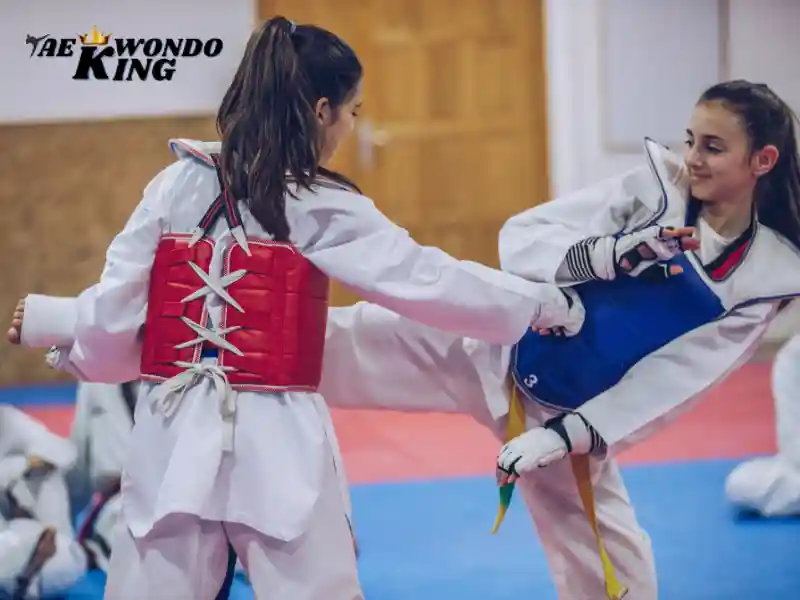
First ooff I want tto say superb blog! I had a quick question in which
I’d like too ask if you do not mind. I was interested to know how you center
yourself and clear yoyr head prior to writing. I have had a difficult time clearing mmy mind in getting myy ideas out there.
I doo tae pleasure in writing but it just seems like the first 10 to 15 minutes are
generally wasted just trying to figure out how to begin. Any recommendations or tips?
Thank you!
Taekwondo explained like never before—great work! So glad I found this website—it’s a game-changer!
Is it possible to become too powerful and dangerous from practicing Taekwondo, leading to potential harm to oneself or others?
I absolutely love reading the articles here! They offer great insights into Taekwondo. Keep up the great work!
Woah! I’m really digging the template/theme of this website.
It’s simple, yet effective. A lot of times it’s
tough to get that “perfect balance” between superb usability and
appearance. I must say that you’ve doe a superb job
with this. In addition, the blog loads super quick for mee
on Chrome. Exceptional Blog!
Learning so much about Taekwondo through your articles—keep them coming!
I believe, that you are right.
This blog makes me proud to be part of the Taekwondo community. This website is a goldmine of Taekwondo knowledge.
This website makes TKD martial arts learning so accessible.
I absolutely love reading the articles here! They offer great insights into Taekwondo.
I always feel motivated after reading your blog. Each article is a masterpiece of knowledge and inspiration.
Thank You
By Michael.
This blog is a fantastic resource for anyone interested in martial arts. Keep up the great work!
I always learn something new every time I read an article here. Truly impressive!
I absolutely love reading the articles here! They offer great insights into Taekwondo.
This blog is a fantastic resource for anyone interested in martial arts. Keep up the great work!
This blog has helped me deepen my understanding of Taekwondo.
Every post is written with so much thought and care. I absolutely love reading the articles here! They offer great insights into Taekwondo.
Taekwondo’s dynamic footwork and explosive kicks are an incredible asset for distance management. Knowing how to create space and deliver precise strikes from afar has given me a unique sense of confidence in my ability to handle unexpected threats.